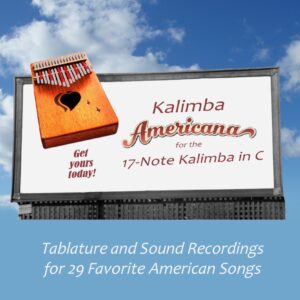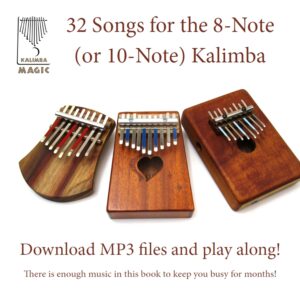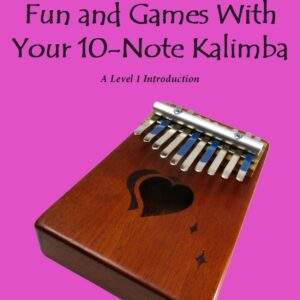15 YEARS
in Business
100% MONEY BACK
Exchange for a Different Kalimba
30 DAYS
Satisfaction Guarantee
$8.00
The Duncan tuning is a B minor heptatonic 15-Note Alto kalimba that gives you lots of unique geometrical options – you play this one differently, and it sounds different. This eBook is a PDF file with live links to the sound files that will illustrate how each song is supposed to sound. 50 pages, with 36 lessons and songs. The Duncan tuning dates back to 1970, and is from Cornelius Duncan’s brother.
In stock
in Business
Exchange for a Different Kalimba
Satisfaction Guarantee
This eBook is a PDF file with live links to the sound files that will illustrate how each song is supposed to sound. 50 pages, with 36 lessons and songs.
One of the key features of most kalimbas: notes that are on the right in the lower octave will flip sides to the left for the upper octave… and vise versa.
But what if there were a tuning where a given note that is on the right side… stays on the right side in the upper octaves? Such a tuning would be played totally differently than the standard kalimba tunings, and it would also make quite different music.
Are you interested in making totally different music, just for the price of a new tuning?
The Duncan tuning is a heptatonic (6 tone) B minor scale, starting on F#. Heptatonic scales have 6 notes per octave. That would be: B, C#, D, E, F#, and A. On a kalimba with alternating note layout, a 6-note scale means the left side of the instrument will make one chord, and the right side will make another chord.
One of the main results from Hugh Tracey?s 1950s-era survey of traditional African kalimbas is that about 40% of the instruments had 5-note scales (pentatonic), 20% had 6-note scales (heptatonic), and 40% had 7-note scales (many were similar to the white notes on the piano). So, while 6-note tunings like this were not the most common tunings in Africa, they are firmly rooted in the historical record of traditional African scales.
I was so taken with the Duncan tuning that I wrote an ebook to help people play this remarkable instrument.
Learn more about Cornelius Duncan. Learn more about the Cornelius Duncan-tuned kalimba.
The “Duncan-tuned Alto” is a Hugh Tracey Alto kalimba in a special tuning. It’s music is simply enchanting.





